
Mimosa is the second-brightest object in the southern constellation of Crux,and the 20th-brightest star in the night sky. It has the Bayer designation βCrucis,which is Latinised to Beta Crucis and abbreviated Beta Cru or βCru. Mimosa forms part of the prominent asterism called the Southern Cross. It is a binary star or a possible triple star system.
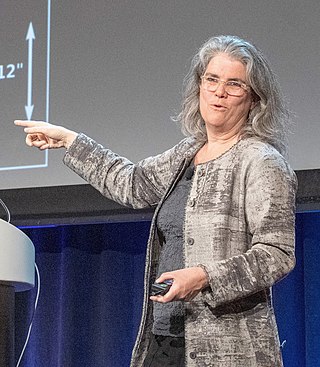
Andrea Mia Ghez is an American astrophysicist,Nobel laureate,and professor in the Department of Physics and Astronomy and the Lauren B. Leichtman &Arthur E. Levine chair in Astrophysics,at the University of California,Los Angeles. Her research focuses on the center of the Milky Way galaxy.
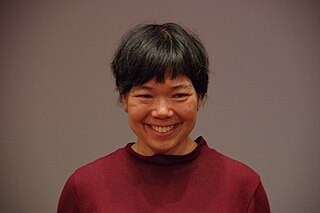
Jane X. Luu is a Vietnamese-American astronomer and defense systems engineer. She was awarded the Kavli Prize for 2012 "for discovering and characterizing the Kuiper Belt and its largest members,work that led to a major advance in the understanding of the history of our planetary system".
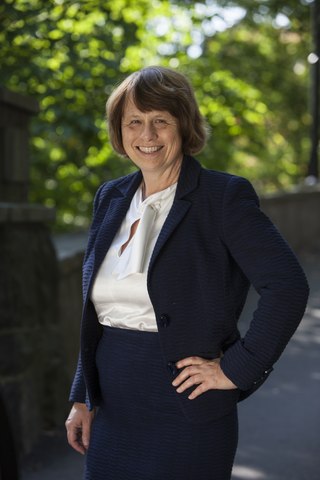
Ewine Fleur van Dishoeck is a Dutch astronomer and chemist. She is Professor of Molecular Astrophysics at Leiden Observatory,and served as the President of the International Astronomical Union (2018–2021) and a co-editor of the Annual Review of Astronomy and Astrophysics (2012–present). She is one of the pioneers of astrochemistry,and her research is aimed at determination of the structure of cosmic objects using their molecular spectra.
The Francqui Prize is a prestigious Belgian scholarly and scientific prize named after Émile Francqui. Normally annually since 1933,the Francqui Foundation awards it in recognition of the achievements of a scholar or scientist,who at the start of the year still had to be under 50. It currently represents a sum of 250,000 Euros and is awarded in the following three-year rotation of subjects:exact sciences,social sciences or humanities,and biological or medical sciences.
Marie-Claire,Baroness Foblets is a Belgian lawyer and anthropologist,who is currently Director of the Max Planck Institute for Social Anthropology and Professor at the Katholieke Universiteit Leuven. Her research interests are interculturalism,migration and minorities.

Xi Hydrae,Latinised from ξHydrae,is a solitary star in the equatorial constellation of Hydra. It was also given the Flamsteed designation 19 Crateris. This magnitude 3.54 star is situated 130 light-years from Earth and has a radius about 10 times that of the Sun. It is radiating 58 times as much luminosity as the Sun.
Jerry Earl Nelson was an American astronomer known for his pioneering work designing segmented mirror telescopes,which led to him sharing the 2010 Kavli Prize for Astrophysics.
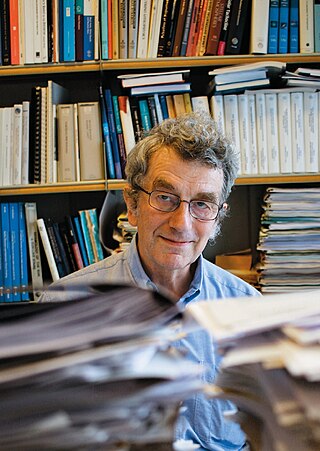
Jørgen Christensen-Dalsgaard is a Danish astronomer at Aarhus University in Denmark. He specializes in asteroseismology and helioseismology. He has made significant contributions to both fields,including predicting the oscillation of Sun-like stars in 1983. He is the head of "Rumudvalget" and the Stellar Astrophysics Centre (SAC) supported by the Danish National Research Foundation. He is co-investigator on the Kepler mission and,with Hans Kjeldsen in Aarhus,leads the 500+ researchers in the Kepler Asteroseismic Science Consortium (KASC). KASC is responsible for the asteroseismology component of the Kepler mission. Christensen-Dalsgaard has published several papers on this subject. He was also previously the president of Commission 27 of the International Astronomical Union.

KU Leuven is a Catholic research university in the city of Leuven,Belgium.
Douglas Owen Gough FRS is a British astronomer,Professor Emeritus of Theoretical Astrophysics in the University of Cambridge,and Leverhulme Emeritus Fellow.
Yvonne Elsworth FRS FInstP FRAS is an Irish physicist,Professor of Helioseismology and Poynting Professor of Physics in the School of Physics and Astronomy at the University of Birmingham. Elsworth was until 2015 also the Head of the Birmingham Solar Oscillations Network (BiSON),the longest running helioseismology network with data covering well over three solar cycles.
The Brain Prize,formerly known as The Grete Lundbeck European Brain Research Prize,is an international scientific award honouring "one or more scientists who have distinguished themselves by an outstanding contribution to neuroscience and who are still active in research". Founded in 2011 by the Lundbeck Foundation,the prize is associated with a DKK 10 million award to the nominees,the world’s largest brain research prize.
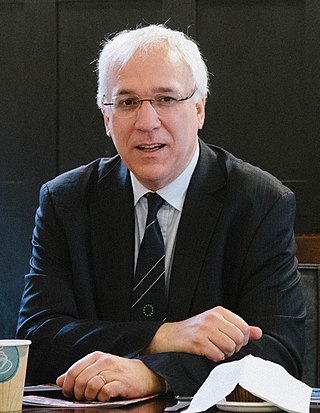
Jan Maria Florent Wouters is a Belgian academic. He is Jean Monnet Chair,and Professor of International Law and International Organizations at KU Leuven,where he is also Director of its Centre for Global Governance Studies and Institute for International Law.

Barbara Baert is a Belgian art historian,and professor of art history at KU Leuven. In 2016 Baert earned the prestigious Francquiprijs,which is yearly awarded by the Francqui-Stichting to a scientist in human,exact and biological-medical sciences.

Vassiliki Kalogera is a Greek astrophysicist. She is a professor at Northwestern University and the director of the Center for Interdisciplinary Exploration and Research in Astrophysics (CIERA). She is a leading member of the LIGO Collaboration that observed gravitational waves in 2015.
Illuminare –Centre for the Study of Medieval Art KU Leuven,is a university-led research and documentation centre. It is situated in the University Library in the town of Leuven,Belgium and is accessible to both academics and students. The focus on Medieval and Early Modern Art from the Southern Low Countries in a European perspective is facilitated by both research and doctoral projects that are in turn supported by a vast international network of universities,institutions,and museums.
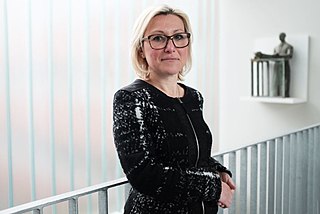
Valeria Pulignano is an Italian-born sociologist,full Professor of Sociology at the University of Leuven,Belgium,and author of numerous publications on comparative industrial relations,labour markets and employment in Europe. She was formerly (2013–2017) scientific director of the Center for Social Sociological Research (CeSO) at KU Leuven. She is Specialty Chief Editor of the "Work,Employment and Organization" section of Frontiers in Sociology,co-coordinator of the RN17 Work,Employment and Industrial Relations at the European Sociological Association (ESA) and principal investigator of the ERC Advanced Grant Research Project “Revolving Precariousness:Advancing the Theory and Measurement of Precariousness Across the Paid/Unpaid Continuum”(ResPecTMe).

Frans Carl De Schryver is a Belgian chemist currently serving as Professor Emeritus in the Department of Chemistry of the KU Leuven. Pursuing his interests in polymer synthesis,time and space resolved chemistry,he founded the Laboratory for Photochemistry and Spectroscopy at the KU Leuven. He has co-authored over 650 papers in peer-reviewed journals.

Stein Aerts is a Belgian bio-engineer and computational biologist. He leads the Laboratory of Computational Biology at VIB and KU Leuven,and is director of VIB.AI,the VIB Center for AI &Computational Biology. He has received several accolades for his research into the workings of the genomic regulatory code.













